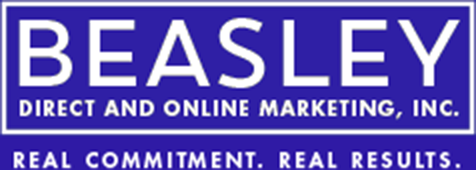Why a Thoughtful Google Ads Relaunch Strategy Matters
Re-launching your Google Ads account isn’t as simple as flipping the switch back on. If you’ve previously paused your campaigns, user behaviors and market trends may have shifted in the meantime. By following a carefully planned re-launch strategy, you’ll optimize your ads for current trends, minimize wasted ad spend, and start seeing results more quickly.
Here are the Key Things to Focus on During your Re-launch:
1. Craft Engaging and Dynamic Ad Content
Leverage ChatGPT for Creative Ad Creation
If writing ad content feels overwhelming, artificial intelligence tools like ChatGPT can help you generate highly tailored Google Ads copy. Here’s how to make the most of it:
- Create specific prompts for each product page, including details about the product, desired tone, and ad requirements (like character limits).
- Highlight the product’s features and benefits and be clear about search themes.
- Rigorously proofread the outputs and refine prompts to improve outcomes.
Test Multiple Variations
Don’t stop at one version of your ad! Create variations of headlines, descriptions, and images to identify the most engaging combinations. Dynamic content ensures you keep reaching diverse audiences, while also gathering data on what works best.
Use Performance Max Campaigns
Performance Max (pMax) campaigns automatically optimize ad placements across Google properties, increasing your reach. Leverage the combinations of assets (headlines, descriptions, images, and video) to make the most of automation powered by AI.
Align Content with Promotions
Keep your campaigns fresh by updating ad content to highlight seasonal events, holidays, or special discounts. Stale content is quickly overlooked; keep your ads as dynamic as your audience’s needs.
2. Stay Ahead with Industry Knowledge
The digital marketing landscape, especially Google Ads, is constantly evolving. To maintain an edge, you need to stay updated on trends and new features.
- Follow Key Resources
Search Engine Land provides valuable insights into SEO, PPC, and Google Ads strategies. Google’s official blogs, such as Google Ads & Commerce and The Keyword, share the latest updates and tools available. Check community forums and ChatGPT developments for more automation and AI tips. - Adapt to Future Trends
With Google’s planned AI overhaul, the way users search and engage with ads is shifting. Consider exploring tools like Google’s new Gemini AI (once mature) to stay ahead as AI reshapes the search marketing landscape.
3. Optimize Bidding Strategies
Start Small
When launching your campaigns, begin with a low cost-per-click (CPC) bid (e.g., $0.03 to $0.05). This allows you to gather performance data while keeping costs manageable.
Allow Bid Strategy Learning
Google’s Bid Strategy Learning period requires up to two weeks to optimize campaigns properly. Be patient and avoid drastic changes during this time, as it will reset the learning process.
Monitor and Adjust
Once your campaign has stabilized, gradually increase your bids based on ROI and performance data. This will help you allocate budget effectively while maximizing returns.
4. Follow Campaign Launch Best Practices
Prepare with Lead Time
Allocate at least a month of preparation before running a new campaign. This gives you time to work through Google Ads’ learning period, optimize ad groups and assets, and gather valuable performance data to refine your campaign.
Daily Monitoring
When the campaign goes live, check its performance daily during the initial week to fix any setup issues or tracking errors promptly. Use the first month’s data to refine targeting, keywords, and ad copy to improve results.
Experiment with A/B Testing
Constant experimentation is key to uncovering new opportunities. Use A/B testing to compare different versions of your headlines, descriptions, and visuals. Even small adjustments can significantly improve click-through rates (CTR) or conversions.
5. Track Performance Like a Pro
Use Google Ads Conversion Tracking
Set up Google Ads conversion tags via Google Tag Manager to track key performance actions, including purchases, form submissions, and sign-ups. Test these tags thoroughly to ensure accuracy.
Leverage Google Analytics
Link your Google Ads account to Google Analytics for enhanced insights into your audience’s behavior. Utilize imported conversions and set up goals in Analytics to mirror your campaign objectives.
Add UTM Parameters
Tag your URLs with UTM parameters like utm_source and utm_campaign to trace ad performance in Analytics.
Enable Enhanced Conversions
Enhanced conversions securely send hashed customer data (e.g., email or phone) when conversions occur, improving the accuracy of your tracking.
6. Stay Competitive with Competitor Insights
- Use Google Ads Tools
Auction Insights Report gives you a breakdown of how your campaigns stack up against competitors. The Ad Preview and Diagnosis tool helps you analyze competitors’ ads for inspiration and insights. - Research Keywords
Third-party tools like SEMrush and SpyFu allow you to dig into the keywords your competitors are targeting and assess their ad spend.
7. Build a Data-Driven Feedback Loop
- Routine Optimizations
Update ad content to reflect new trends, offers, or lessons learned from past campaigns. Refine targeting criteria and bidding strategies based on analytics. - Document Changes
Maintain a changelog for all edits and adjustments—this helps ensure consistency and enables better tracking over time. - Automate Reporting
Use tools like Looker Studio to create customized dashboards combining data from Google Ads and Analytics. Automate reports to keep key stakeholders informed without extra manual effort.
Nail Your Google Ads Relaunch Today
Re-launching your Google Ads account is more than restarting campaigns. It is about leveraging insights, refining strategies, and staying agile in an evolving digital landscape.
By focusing on dynamic ad content, tracking performance diligently, and staying informed about industry trends, you’ll amplify your campaign’s effectiveness while minimizing waste.
Are you ready to take your Google Ads to the next level? Follow these best practices and set yourself up for success in your re-launch. Or, if you need help, contact us for a Google Ads audit and start-up management kit.


